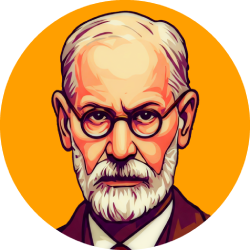When we think of psychoanalysis, we soon come to mind the figure of Sigmund Freud, considered the father of this discipline. However, few know that Freud’s approach has evolved significantly over the years, influenced by his own experiences and discoveries. In this article, we will explore how psychoanalytic technique developed in Freud’s personal practice, bringing valuable insights to better understand this therapeutic approach.
Introduction to Psychoanalysis
THEpsychoanalysis, as a field of study and clinical practice, emerged in the late nineteenth century. Freud, an Austrian neurologist, began to develop his theories about the functioning of the human mind, especially in relation to the unconscious. He proposed that many of our thoughts, feelings and behaviors are influenced by factors outside our consciousness, which revolutionized the way we understood psychology at the time.
Freud began his career working with hysteria patients, using hypnosis as one of the therapeutic techniques. However, he soon realized that hypnosis had limitations and was not effective for all patients. It was then that he began to develop other approaches, more focused on the patient’s speech and active listening.
Development of psychoanalytic technique
Freud’s psychoanalytic technique has evolved over the years, influenced by his clinical and theoretical observations. He began to emphasize the importance of free association, where the patient was encouraged to talk about anything that came to mind, without censorship or judgment. This helped reveal contents of the unconscious and better understand the patient’s internal conflicts.
Another crucial aspect of psychoanalytic technique was the concept of transfer. Freud noted that patients often directed feelings and desires, originated in past relationships, to the analyst. This allowed the therapist to better understand the patient’s relationship patterns and work with him to resolve unresolved issues.
Personal influences on the evolution of technique
Freud’s own life and experiences significantly influenced the evolution of his psychoanalytic technique. His interests in philosophy, anthropology and literature enriched their understanding of human behavior. In addition, their personal relationships, including those with colleagues like Carl Jung and Alfred Adler, contributed to the development of their ideas.
Freud was also influenced by his own analysis, first with Josef Breuer and later with his self -analysis. These experiences helped him better understand psychic processes and refine his therapeutic approach. Self-analysis, in particular, allowed Freud to exploit his own unconscious thoughts and feelings, becoming a model for psychoanalytic practice.
Legacy and impact on modern psychology
Freud’s legacy in modern psychology is immense. His theories about the unconscious, the structure of personality (id, ego and superego) and defense mechanisms influenced generations of psychologists and psychoanalysts. Psychoanalysis, as a therapeutic approach, continues to be used worldwide, with adaptations and modifications that reflect contemporary needs.
In addition, Freud’s ideas permeate other areas, such as sociology, anthropology and philosophy. Its impact can be seen in the way we think about issues such as sexuality, morality and the role of the family in society. Freud’s influence is also evident in literature and cinema, where psychoanalytic themes are often explored.
In short, the evolution of psychoanalytic technique in Freud’s personal practice was a continuous process, shaped by his clinical observations, theories and personal experiences. Its legacy is a lasting contribution to our understanding of human behavior and continues to influence psychology and other disciplines to the present day.


